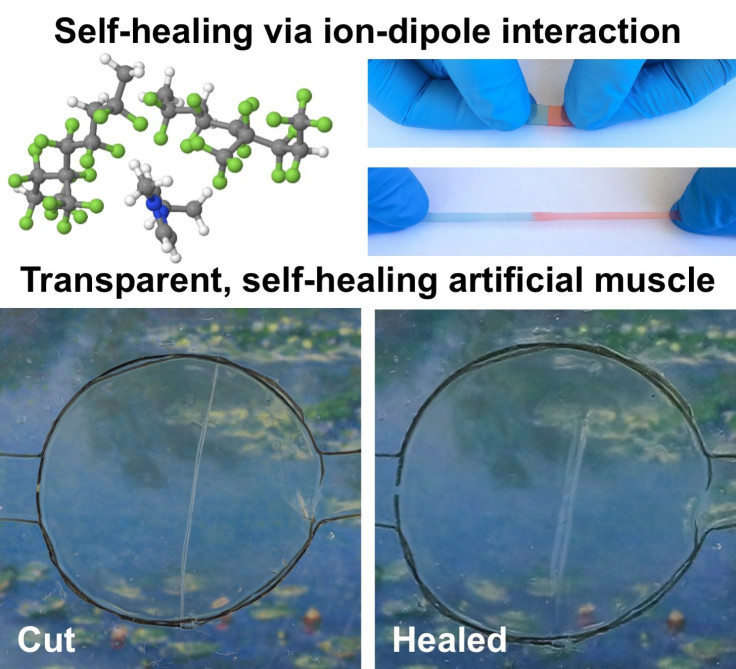Researchers Create Wolverine-Inspired Self-Healing, Stretchable And Highly Conductive Material

Imagine a material that, when cut, can repair itself — à la Wolverine from “X-Men” — and is transparent, extremely stretchable, as well as highly conductive. Scientists believe that such a material, if developed, can be used — among other things — to create “self-healing” robots and to increase the life of lithium-ion batteries.
A team of researchers described, in a study published Friday in the journal Advanced Materials, the creation of such an ionic conductor — one that is transparent, stretchable and self-healing. The rubber-like material can stretch to a staggering 50 times its original length, and can “heal” in a span of just 24 hours after being cut at room temperature. Moreover, just five minutes after healing, it can be stretched to two times its original length.
“Inspired by wound healing in nature, self-healing materials repair damage caused by wear and extend the lifetime, and lower the cost, of materials and devices,” the University of California, Riverside, whose researchers were involved in the study, said in a statement. “The key difficulty is the identification of bonds that are stable and reversible under electrochemical conditions. Conventionally, self-healing polymers make use of non-covalent bonds, which creates a problem because those bonds are affected by electrochemical reactions that degrade the performance of the materials.”
In order to overcome this hurdle, the researchers used what’s known as ion-dipole force — an attractive force that is created due to interaction between an ion and a neutral molecule containing a dipole. Doing so enabled the researchers to create a material that had the properties they were seeking.
“Creating a material with all these properties has been a puzzle for years,” study co-author Chao Wang from the University of California said in the statement. “We did that and now are just beginning to explore the applications.”
The researchers also demonstrated how the material could be used as an artificial muscle that contracts and expands in response to external stimulus.
“Most importantly, the researchers were able to demonstrate that the ability of the new material to self-heal can be used to mimic a preeminent survival feature of nature: wound-healing,” the university said in the statement. “After parts of the artificial muscle were cut into two separate pieces, the material healed without relying on external stimuli, and the artificial muscle returned to the same level of performance as before being cut.”
© Copyright IBTimes 2025. All rights reserved.





















